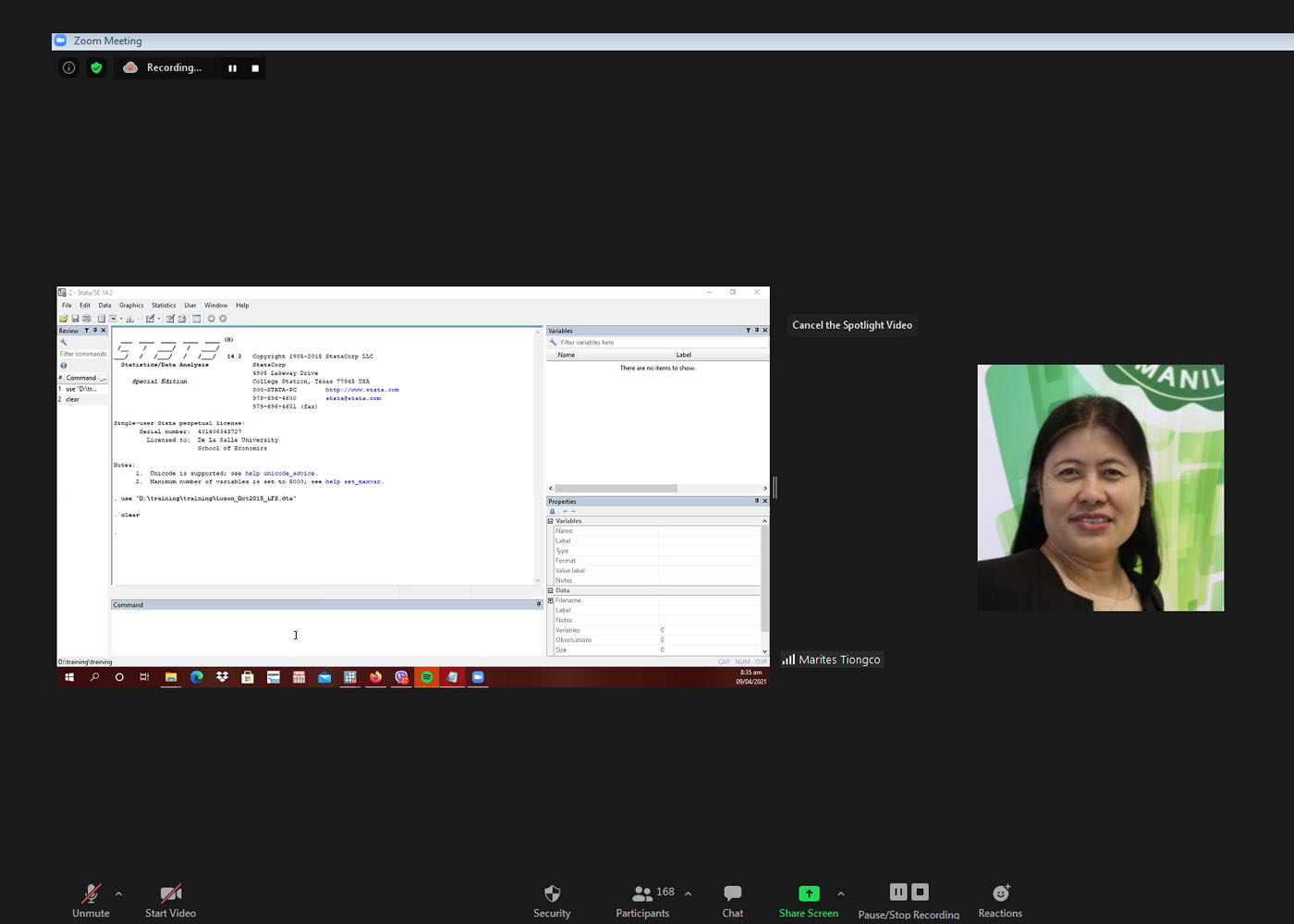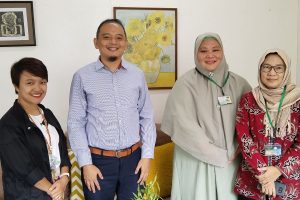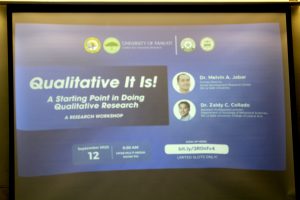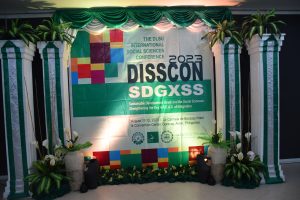A Holiday for the Resolute: Teaching Statistics for the Social Sciences
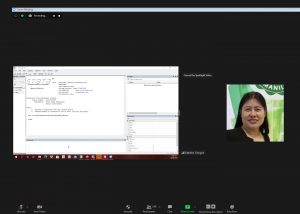 Participants in SDRC’s “Learning the Ropes of Statistics” webinar on April 9 were witness to a special kind of valor as its speaker, DLSU School of Economics Dean Dr. Marites Tiongco, fended off a cough and cold to push through with the training, scheduled on the Araw ng Kagitingan holiday. Not wanting to disappoint, she guided 169 participants—watching on Zoom from the University of St. La Salle in Bacolod, Bicol State College of Applied Sciences and Technology in Naga City, Sultan Kudarat State University, University of Eastern Philippines Laoang Campus in Northern Samar, Mariano Marcos State University in Ilocos Norte, Samuel Christian College in General Trias and Cavite State University in Indang, Cavite, Mindanao State University-Marawi Campus, the Philippine Carabao Center National Headquarters in Nueva Ecija, University of the Immaculate Conception in Davao City, the Biological Research and Services Laboratory at the University of the Philippines-Diliman, and Eastern Visayas State University in Tacloban City—through a lecture-demonstration on advanced statistical analysis. Assisting her during the session was Emmanuel Barnedo, a research analyst and Master of Statistics (MoS) student at UP School of Statistics.
Participants in SDRC’s “Learning the Ropes of Statistics” webinar on April 9 were witness to a special kind of valor as its speaker, DLSU School of Economics Dean Dr. Marites Tiongco, fended off a cough and cold to push through with the training, scheduled on the Araw ng Kagitingan holiday. Not wanting to disappoint, she guided 169 participants—watching on Zoom from the University of St. La Salle in Bacolod, Bicol State College of Applied Sciences and Technology in Naga City, Sultan Kudarat State University, University of Eastern Philippines Laoang Campus in Northern Samar, Mariano Marcos State University in Ilocos Norte, Samuel Christian College in General Trias and Cavite State University in Indang, Cavite, Mindanao State University-Marawi Campus, the Philippine Carabao Center National Headquarters in Nueva Ecija, University of the Immaculate Conception in Davao City, the Biological Research and Services Laboratory at the University of the Philippines-Diliman, and Eastern Visayas State University in Tacloban City—through a lecture-demonstration on advanced statistical analysis. Assisting her during the session was Emmanuel Barnedo, a research analyst and Master of Statistics (MoS) student at UP School of Statistics.
Dr. Tiongco began the webinar training with a video entitled “What’s the difference between econometrics and statistics?”, in which economist Josh Angrist explained that while statisticians are concerned with statistical inference, or how to learn about an underlying population from a particular sample that is much smaller, with different samples producing different results, econometricians are concerned with causal inference, and rely on tools and modeling methods to learn about something that is unknowable. She then proceeded with her presentation which included an introduction to linear regression, regression diagnostics, and regression with categorical dependent variable (logit and probit models). Some time was spent illustrating the concept of endogenous variables, or variables in a statistical model that are changed or determined by their relationship with other variables in the model, which she pointed out was a difficult part of diagnostics.
Among the participants’ concerns addressed by Dr. Tiongco were whether there is a required format in Excel before importing; what are the things to remember when coding variables; whether STATA/IC is sufficient for dissertation research; how to check the quality of data sets; whether non-parametric tests can be run in STATA; whether data cleaning can be done in STATA; whether non-normal distribution indicates false observations; whether a significant correlation is a prerequisite to the use of regression, especially in multiple regression; whether data spikes indicate a market disruption or crisis; whether stepwise regression can be used in STATA; whether ratio variables should be transformed into natural logarithm of common logarithm form; what tests were advised for homogeneity of variables; and whether interaction effects could be applied between variables to address multicollinearity.
The participants appreciated Dr. Tiongco’s sharing her expertise with them and her willingness to continue the webinar discussion for a second session, further affirming that it was indeed a good day to celebrate heroes.


